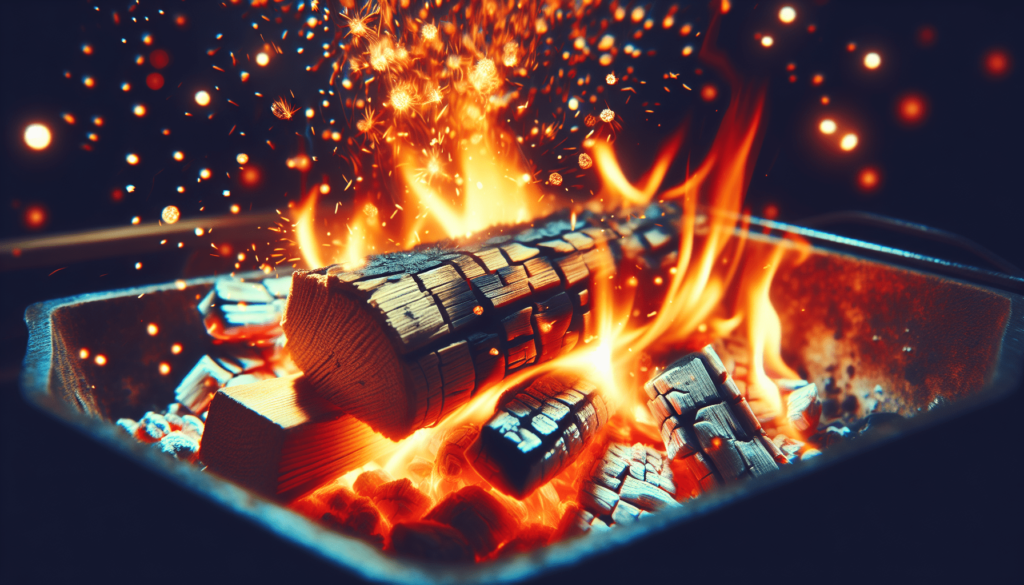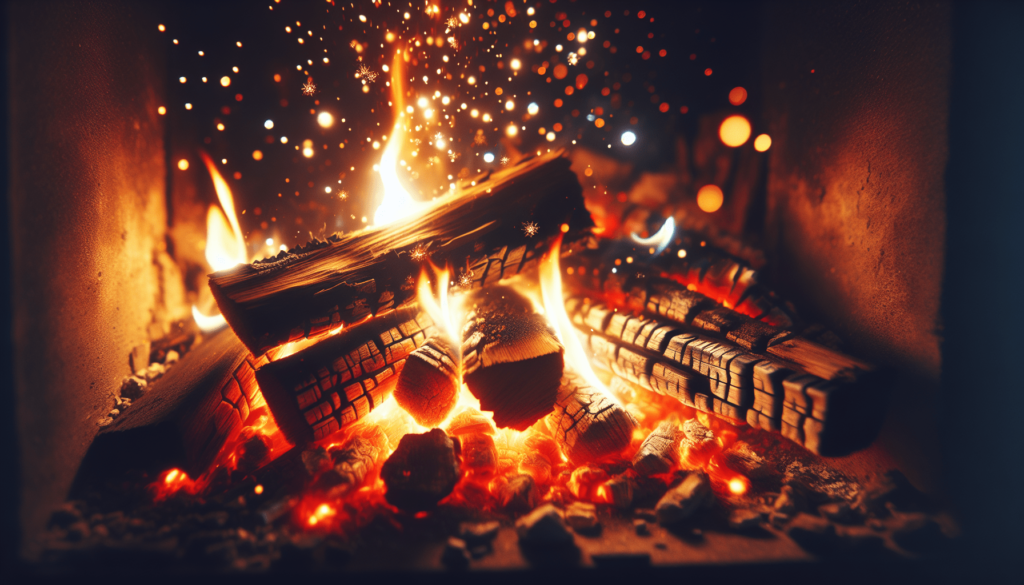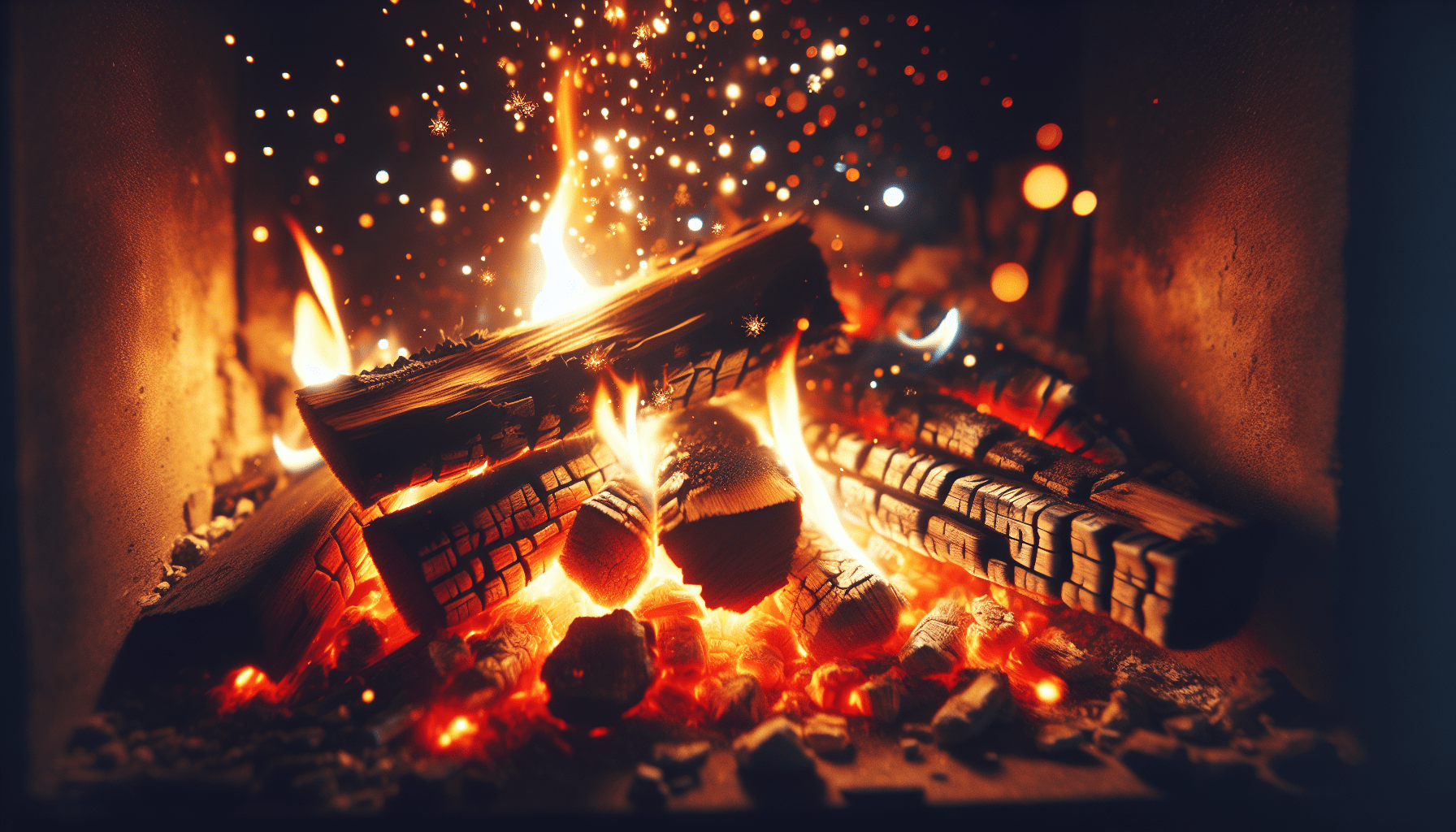Have you ever sat by a campfire and wondered, “What is the sound of burning wood called?” It’s a question that might seem simple at first, but there’s more to it than meets the ear. As someone who finds solace in the crackling of a good fire, I can assure you there’s something almost poetic about the noise. So, let’s get to the heart of it: what exactly is that delightful sound?
The Sound: Crackling and Popping
When we think about the sound of burning wood, the words that typically come to mind are “crackling” and “popping.” These terms describe the noises made by wood as it burns, and they each tell a bit of a different story.
Crackling
Crackling is the intermittent sound made when wood burns. It’s almost like nature’s own white noise, right? When wood combusts, the sap and moisture inside it get heated up and start to boil. This creates steam, which tries to escape. The pressure of escaping steam causes the wood fibers to burst, producing that familiar crackling noise.
Popping
Popping, on the other hand, exemplifies those sporadic bursts of noise that are louder and occur less frequently than crackling. Popping often happens when larger pockets of moisture or gas trapped inside the wood rapidly expand and rupture. It’s like the wood’s way of letting you know, “Hey, I’ve still got some life in me!”
| Sound | Description |
|---|---|
| Crackling | Created by the heated sap and moisture inside the wood, causing the wood fibers to burst as steam escapes. More intermittent and consistent. |
| Popping | Occurs when larger pockets of moisture or gas within the wood rapidly expand and rupture. Louder and less frequent compared to crackling. |
The Science Behind the Sounds
Now that we’ve defined the main sounds, let’s dig into the science a bit more. Trust me, you don’t need a lab coat for this—it’s just as interesting and far less sterile.
Combustion: The Breakdown
Combustion is basically a chemical reaction between the wood and oxygen, but it’s not that simple, of course. There are three main stages of combustion: dehydration, pyrolysis, and oxidation.
- Dehydration: This is the initial stage where the wood heats up, and all the water content evaporates. No crackling just yet, but hang tight.
- Pyrolysis: At this stage, the wood begins to break down chemically, releasing gases and causing that steam-driven crackling.
- Oxidation: This is when those gases, now mixed with oxygen, ignite and produce flames. You get the visual spectacle to go along with your auditory experience.
Sap and Resin: The Unseen Players
Both sap and resin are crucial for that iconic crackling sound. Sap, found in living trees, contains water and nutrients. Resin, on the other hand, is thicker and more viscous, often found in certain species like pine trees. When either of these substances heats up, they produce steam or gas, contributing to the magnificent orchestra of crackling and popping.

Cultural and Emotional Significance
There’s something universally appealing about the sound of burning wood. It brings people together, conjures up memories, and feels inherently comforting. Let’s dive into the cultural and emotional reasons that make this sound so enthralling.
Bringing People Together
Humans have been gathering around fires for thousands of years. Think back to our ancestors, who relied on fire not just for warmth, but for cooking and protection. Sitting around a campfire, sharing stories, roasting marshmallows—these activities create a communal sense. The sound of the crackling fire serves as background music to our shared human experience.
A Comforting Presence
The sound of a fire can be strangely soothing, almost as if it lulls you into a state of relaxation. There’s even a term for people who find peace in the simplicity of nature sounds: biophilia. When you envelop yourself in the sound of crackling wood, it taps into something deep and primal.
Evoking Memories
For many, the sound of a fire conjures up specific memories. Maybe it’s camping trips with the family, chilly fall nights, or that one perfect holiday evening by the fireplace. It’s a sound that connects with our emotional core, making us feel nostalgia, warmth, and sometimes, a little sadness.
Practical Uses of the Sound
Believe it or not, the sound of burning wood isn’t just for pleasure. It has some practical uses, too—not that we need an excuse to enjoy it more!
Firewood Quality
Ever thought you could judge firewood quality by its sound? Well, you can. Seasoned (properly dried) wood will crackle nicely without excessive popping. This is because there’s less moisture content, meaning fewer pockets of steam and a more consistent burn.
Ambient Noise
More recently, the sound of burning wood has been used as ambient noise in various settings. Think about those logs burning on your TV screen during Christmas, or the endless loops of crackling fireplace sounds available on streaming platforms. They’re used to create a cozy atmosphere, even if you don’t have a fireplace.

Comparing the Sounds of Different Types of Wood
Not all wood sounds the same when it burns, which I find absolutely fascinating. Different types of wood have different moisture levels, sap content, and densities, all of which affect the sound they produce.
Hardwoods vs. Softwoods
| Type | Description |
|---|---|
| Hardwoods | Tend to burn hotter and longer. Examples include oak, maple, and hickory. They generally produce a steady crackling sound with less popping. |
| Softwoods | Burn faster and not as hot. Examples include pine, spruce, and fir. These types are rich in sap, making them produce louder and more frequent popping sounds. |
Examples of Wood and Their Sounds
Oak
Oak is a hardwood that burns slowly and steadily. It produces a consistent crackling sound with minimal popping. It’s great for a long, even burn that warms your toes all night.
Pine
Pine is a softwood that burns quickly and produces a lot of resin. This makes for a noisy burn with plenty of popping sounds. If you love a lively fire, pine might be your wood of choice.
How to Enhance the Sound
While nature provides us with the symphony, we can play a bit of the conductor, too. If the sound of burning wood is what you’re after, here are some tips to enhance it.
Choose the Right Wood
As we’ve covered, hardwoods and softwoods have different soundscapes. Mixing them strategically can give you a balanced experience of both crackling and popping.
Dry It Out
Ensure your wood is well-seasoned. Freshly cut wood or “green wood” is full of moisture and won’t give you that satisfying crackle. Aim for wood that’s been dried out for at least six months.
Stack and Arrange
The way you stack your wood affects airflow, which in turn affects combustion. A good stack promotes better airflow, resulting in a more consistent burn and sound.
| Tip | Description |
|---|---|
| Choose the Right Wood | Mix hardwoods and softwoods for a balanced sound. |
| Dry It Out | Use well-seasoned wood to enhance the crackling while reducing excessive popping. |
| Stack and Arrange | Proper stacking promotes airflow, leading to a more consistent and enjoyable burn and sound. |
The Modern Appeal
It’s not just traditionalists who love the sound of burning wood. There’s a renewed interest in it, thanks in part to a growing desire for natural and sensory experiences in an increasingly digital world.
ASMR and Relaxation
Autonomous Sensory Meridian Response (ASMR) has taken the internet by storm. You can find countless ASMR videos featuring the sound of crackling and popping fires, designed to induce calmness and relaxation.
Smart Home Integration
Even tech has found a way to integrate this age-old comfort. Digital fireplaces are now more realistic than ever, complete with high-quality audio to emulate the crackling of real wood.
Sustainability
With the rise of sustainable living, many are opting for wood-burning stoves as an eco-friendly heating option. There’s something beautifully simplistic about relying on the same natural fuel our ancestors used.
Safety Concerns
I’d be remiss not to touch on safety. Fire is beautiful, but it demands respect. Here are some safety tips to keep in mind while you enjoy that wonderful sound.
Fire Safety Tips
- Keep a Safe Distance: Always keep flammable materials away from your fire.
- Proper Ventilation: Ensure your space is well-ventilated to avoid smoke inhalation.
- Never Leave Unattended: Never leave a fire burning unattended, whether it’s indoors or out.
- Use a Fire Screen: Especially indoors, use a fire screen to catch sparks and prevent them from igniting something they shouldn’t.
Preventive Measures
- Fire Extinguishers: Keep them handy, just in case.
- Smoke Detectors: Ensure they’re functional and placed correctly in your home.
- First Aid Kit: Always keep one nearby for minor burns or other emergencies.
| Safety Tip | Description |
|---|---|
| Keep a Safe Distance | Maintain a safe distance from flammable materials around the fire. |
| Proper Ventilation | Ensure good ventilation to avoid smoke inhalation. |
| Never Leave Unattended | Never leave a fire burning without supervision, both indoors and outdoors. |
| Use a Fire Screen | Use a fire screen inside to catch flying sparks. |
| Fire Extinguishers | Keep them accessible for emergencies. |
| Smoke Detectors | Make sure they are installed and functional. |
| First Aid Kit | Have one nearby for minor injuries or burns. |
The Environmental Impact
Burning wood, while mesmerizing, has its environmental considerations. It’s something of a double-edged sword but manageable with mindfulness.
Air Quality
Wood smoke contains particulate matter which can affect air quality. If you’re burning wood indoors, modern wood stoves are more efficient and emit fewer pollutants.
Sustainable Sourcing
Be mindful of where your wood comes from. Sourcing wood sustainably ensures that you’re not contributing to deforestation. Look for wood certified by organizations like the Forest Stewardship Council (FSC).
Carbon Footprint
Wood is a renewable resource, but it still releases carbon dioxide when burned. The impact can be minimized by ensuring the wood is properly dried, which makes it burn more efficiently.
Conclusion
So, what is the sound of burning wood called? It’s crackling and popping—but it’s more than just a couple of words. It’s a sensory experience that intertwines with our history, emotions, and even our survival instincts. From the science behind the sounds to the cultural significance, the sound of burning wood is multi-faceted, offering both practical and emotional benefits. It’s a fascinating blend of natural chemistry and human nostalgia. So, the next time you find yourself near a fire, take a moment to really listen. There’s a universe of stories in those tiny explosions of sound, each one a reminder of nature’s simple, yet profound, beauty.

